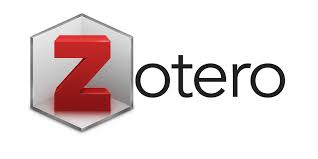Problem-Based Learning dalam Meningkatkan Higher Order Thinking Skills Mahasiswa
DOI:
https://doi.org/10.29240/ja.v4i2.4912Keywords:
Action research, Problem-based learning, HOTSAbstract
The research objective was to improve students' Higher Order Thinking Skills (HOTS) in basic statistics courses through the application of Problem-Based Learning (PBL). This type of research is classroom action research in two cycles with four stages: planning, implementing, observing, and reflecting. The research subjects were 34 students of mathematics education at the University of Bengkulu with 26 female and 8 male students. The research instrument was a HOTS test in the form of a description. The results showed that the application of the PBL model increased student HOTS in basic statistics courses. The increase showed the value of HOTS and classical completeness in the pre-cycle, cycle I, and cycle II. Improvement of HOTS students' abilities is carried out with an emphasis on problem-solving and evaluation as well as emphasizing relevant real problems as a starting point for concept locking.
Downloads
References
Arends, R., & Kilcher, A. (2010). Teaching for student learning. New York: Routledge.
Brookhart, S. M. (2010). How to assess higher-order thinking skills in your classroom. ASCD.
Farren, M. (2012). Using an Inquiry-Based Learning (IBL) Approach to Encourage Higher Order Thinking among My Students of Mathematics. Education and Training Management.
Haji, S. T. S., & Nirwana, N. (2019). Pengaruh Model Problem Based Learning dengan Pendekatan Saintifik Terhadap Kemampuan Pemecahan Masalah Siswa Kelas X SMA Kota Bengkulu. Jurnal Pendidikan Matematika Raflesia, 4(2), 94-102. Retrieved from
https://ejournal.unib.ac.id/index.php/jpmr/article/view/9757.
Kafiar, E., Weyai, S. A., & Hurint, M. T. (2021). Efektivitas Model Pembelajaran Problem Based Learning terhadap Kemampuan Literasi Matematika Berbasis Higher Order Thinking Skill (HOTS) pada SMP YPK 2 Urmboridori Kabupaten Supiori Provinsi Papua. Jurnal Pendidikan Tambusai, 5(3), 10721-10727. Retrieved from
https://jptam.org/index.php/jptam/article/view/2695.
Nuranggraeni, E., Effendi, K. N. S., & Sutirna, S. (2020). Analisis kemampuan berpikir kreatif matematis ditinjau dari kesulitan belajar siswa. JP3M (Jurnal Penelitian Pendidikan dan Pengajaran Matematika), 6(2), 107-114. Retrieved from
https://jurnal.unsil.ac.id/index.php/jp3m/article/view/2066.
Redhana, I. W. (2019). Mengembangkan keterampilan abad ke-21 dalam pembelajaran kimia. Jurnal Inovasi Pendidikan Kimia, 13(1).2239-2252. Retrieved from
https://journal.unnes.ac.id/nju/index.php/JIPK/article/view/17824.
Setiawan, T., & Junaedi, I. (2012). Pengembangan perangkat pembelajaran matematika dengan pendekatan problem-based learning untuk meningkatkan keterampilan higher order thinking. Unnes Journal of Mathematics Education Research, 1(1).73-80. Retrieved from
https://journal.unnes.ac.id/sju/index.php/ujmer/article/view/37.
Sudjana. (2009). Penilaian Hasil Proses Belajar Mengajar. Bandung: PT Remaja Rosdakarya.
Suhaeni, N. S. N., & Sunarti, S. (2020). efektivitas model pembelajaran problem-based learning (PBL) pada peningkatan keterampilan higher order thinking skills (HOTS). Jurnal Sosialita, 14(2). Retrieved from
https://journal.upy.ac.id/index.php/sosialita/article/viewFile/2343/1478.
Susanta, A., Koto, I., & Susanto, E. (2022). Teachers' Ability in Writing Mathematical Literacy Module Based on Local Context. Education Quarterly. Retrieved from https://eric.ed.gov/?id=EJ1351574.
Susanto, E., & Retnawati, H. (2016). Perangkat pembelajaran matematika bercirikan PBL untuk mengembangkan HOTS siswa SMA. Jurnal Riset Pendidikan Matematika, 3(2), 189-197. Retrieved from
https://journal.uny.ac.id/index.php/jrpm/article/view/10631.
Susanto, E., Susanta, A., & Rusdi. (2021). Penelitian Pendidikan Matematika Untuk Mahasiswa Perguruan Tinggi. Bengkulu: Unit Penerbitan FKIP UNIB.
Thompson, T. (2008). Mathematics teachers’ interpretation of higher-order thinking in Bloom’s taxonomy. International electronic journal of mathematics education, 3(2), 96-109. Retrieved from
https://www.iejme.com/article.
Trinter, C. P., Moon, T. R., & Brighton, C. M. (2015). Characteristics of students’ mathematical promise when engaging with problem-based learning units in primary classrooms. Journal of Advanced Academics, 26(1), 24-58. https://www.researchgate.net/publication.
Yen, T. S., & Halili, S. H. (2015). Effective teaching of higher order thinking (HOT) in education. The Online Journal of Distance Education and e-Learning, 3(2), 41-47. Retrieved from
https://tojdel.net/journals/tojdel/articles/v03i02/v03i02-04.pdf.
Downloads
Published
Issue
Section
Citation Check
License
Authors who publish with ARITHMETIC: Academic Journal of Math agree to the following terms:
- Authors retain copyright and grant the journal right of first publication with the work simultaneously licensed under a Creative Commons Attribution-NonCommercial-ShareAlike 4.0 International License (CC BY-NC-SA 4.0) that allows others to share the work with an acknowledgment of the work's authorship and initial publication in this journal.
- Authors are able to enter into separate, additional contractual arrangements for the non-exclusive distribution of the journal's published version of the work (e.g., post it to an institutional repository or publish it in a book), with an acknowledgment of its initial publication in this journal.
- Authors are permitted and encouraged to post their work online (e.g., in institutional repositories or on their website) prior to and during the submission process, as it can lead to productive exchanges, as well as earlier and greater citation of published work (See The Effect of Open Access).







